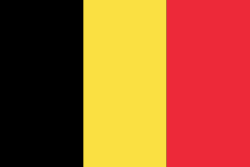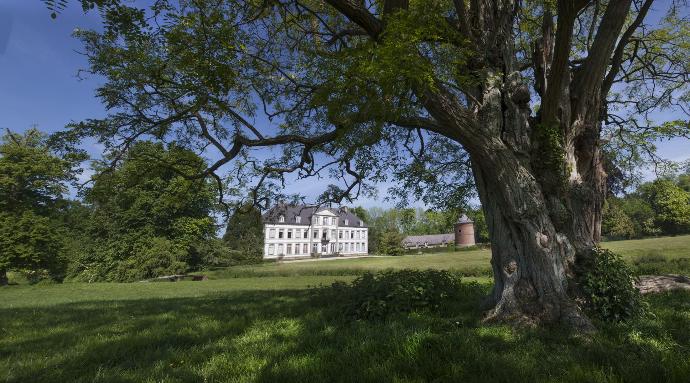ATTRE CASTLE
Nestled on the banks of the Eastern Dender and surrounded by a splendid landscaped park, ’Attre Castle is an exquisite 18th-century manor house. A fine example of neoclassical architecture, it is one of the rare Belgian châteaux to have preserved its original décor and furnishings. Recognised as a site of exceptional heritage in Wallonia, it remains the property of the de Meester de Heyndonck family.
PRESENTATION
Attre Castle, built in 1752 on the foundations of an older structure, was commissioned by Count François-Philippe Franeau d’Hyon, Count of Gommegnies. His son, François-Ferdinand, designed the interiors in the Louis XV style. As a chamberlain at the court of Archduchess Maria Theresa of Austria, he frequently hosted Archduchess Maria Christina of Austria and her husband, Count Albert of Saxony-Teschen, between 1782 and 1788.
In 1814, the château passed to the du Val de Beaulieu family and later, in 1910, to the de Meester de Heyndonck family. It is a remarkable example of neoclassical architecture, featuring a symmetrical and understated façade, a triangular pediment, and two lateral pavilions.
Its 17-hectare landscaped park includes several notable features, such as a 17th-century dovecote and an impressive artificial rock formation with a 33-meter-high tower and underground galleries.
DE LA CATOIRE CASTLE
Located along the road between Leuze and Tournai, the de la Catoire Castle is an elegant Neo-Classical and Palladian residence, built in the 19th century and surrounded by a vast landscaped park. Today, the château is undergoing an extensive restoration project, led by its current owners, Mr and Mrs De Graef, who committed to reviving this remarkable estate.
Today, the château is undergoing an extensive restoration project, led by its current owners, Mr and Mrs De Graef, who committed to reviving this remarkable estate.
PRESENTATION
The castle’s history dates back to the 17th century, when it belonged to the Haudion family. In 1751, Albert Hannecart, Knight and Lord of Wasmes-Briffoeil acquired it. However, the de Séjournet de Rameignies family, who designed it in a refined Neo-Classical and Palladian style, constructed the present building in the 19th century.
Beyond the main castle, the estate features several historic outbuildings, including a 17th-century icehouse, an orangery, a restored barn, a hunting lodge, and a caretaker’s house. A pillory from the same period serves as a reminder of the property’s judicial past.
In old French dictionaries, a “catoire” is a beehive made of woven straw. This reference can be seen on the estate’s outbuildings, where a coat of arms featuring a beehive is displayed.
LOUVIGNIES CASTLE
Nestled in the rolling countryside of Hainaut, Louvignies Castle dates back to a medieval tower built in 1389. Over the centuries, it evolved and expanded before being acquired in 1716 by Don Rodrigues de Perralta, an ancestor of the de Moreau de Villegas de St-Pierre family, who still owns it today.
PRESENTATION
Around 1870, Louvignies castle underwent a major transformation under Count Léon de Villegas de St-Pierre and his wife, Countess Ferdinande de Maillen.
A fine example of 19th-century eclecticism, the castle has preserved its original furnishings. Visitors can step back in time and experience both aristocratic life—through monogrammed tableware, crystal glassware, ball gowns, and family albums—and the daily routines of the household staff. This Belgian château offers an atmosphere reminiscent of Downton Abbey.
The landscaped park, covering 14 hectares, was designed by Louis Fuchs in 1870 and is listed among ‘Wallonia’s remarkable gardens’. It is home to several remarkable trees, including a Virginia tulip tree dating from 1880.
The grounds also features stables, a kennel, a vaulted icehouse, and an orangery set within a historic walled vegetable garden.







